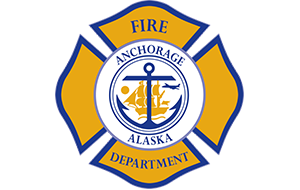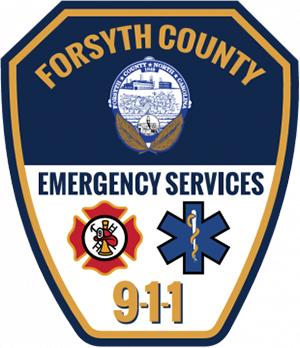Tagged with: Defibrillator

November 24, 2025
Anchorage, Alaska Wins 2025 PulsePoint AED Contest
Anchorage Fire Department receives five ZOLL® AED 3 Defibrillators and a SaveStation Cabinet to place in the community.
The PulsePoint Foundation, a public non-profit 501(c)(3), announced that the Anchorage Fire Department has won the 2025 PulsePoint AED Contest, winning five ZOLL® AED 3 defibrillators and a SaveStation outdoor cabinet providing the first 24/7-accessible ZOLL AED placed in the community.
The contest took place during the month of October, Sudden Cardiac Arrest Awareness Month, and was eligible to any community using PulsePoint AED to locate and register AEDs. The Anchorage Fire Department collectively registered 132 at locations throughout the greater Anchorage area.
Filed Under: Press Release, Highlights | Tagged With: Anchorage Fire Department, AED Contest, ZOLL, ZOLL AED 3, SaveStation, AED Cabinet, 24/7 AEDs, Sudden Cardiac Arrest Awareness Month, NEAR Registry, National Emergency AED Registry, National AED registry, 911 AED, 911 Telecommunicators, 911 AED Registry, cardiac arrest, Defibrillator, Defibrillator Registry, Emergency AED Registry, Douglas Schrage, Michael Levy, out-of-hospital cardiac arrest, OHCA, Bystander CPR, Bystander Engagement, AED-Needed Alerts
April 28, 2025
What to know to save a life: The key to cardiac arrest survival
Bystander training on spotting and using defibrillators can greatly improve cardiac arrest survival, but many people don’t know what to do.
When a woman collapsed on an escalator at the Buffalo airport last June, Phil Clough knew what to do. He and another bystander put her flat on her back and checked her pulse and her breathing. Then she stopped breathing altogether. Realizing that she might be having a cardiac arrest, Clough immediately started doing chest compressions, pressing hard and quickly on the center of her chest, while others nearby called 911 and ran to get an automated external defibrillator. Within seconds of receiving a shock from the AED, the woman opened her eyes. By the time the airport rescue team arrived a few minutes later, she was conscious and able to talk with rescuers.
Filed Under: News, Highlights | Tagged With: AED, CPR, cardiac arrest, Defibrillator, Defibrillator Registry, Michelle Andrews, Phil Clough, 911, Automated External Defibrillator, Automated External Defibrillator Registry, American Heart Association, AHA, AED Locations, Cardiac Arrest Stats, Identifying AEDs, NEAR Registry, Nearby AED, 911 AED Registry, National AED registry, National Emergency AED Registry, AED Registry, AED Response, AED Responder, AED Map, PulsePoint AED, PulsePoint AED Registry, Elijah White, ZOLL, CPR Training, Good Samaritan, AED Law, AED Training, Citizen CPR Foundation, citizen responder, HEARTsafe, 911 Telecommunicators, T-CPR, T-AED, AED-Needed Alerts

November 14, 2024
Forsyth County Emergency Services Wins 2024 PulsePoint AED Contest
Forsyth County Emergency Services receives five ZOLL® AED 3 Defibrillators to place in the community.
Forsyth County Emergency Services, in North Carolina, has won the 2024 PulsePoint AED Contest, winning five ZOLL® AED 3 Defibrillators for their community. The contest took place during the month of October, Sudden Cardiac Arrest Awareness Month, and was eligible to any community using PulsePoint AED to locate and register AEDs. Forsyth County Emergency Services collectively registered a record number of AEDs, 555, at locations throughout the county including schools, government buildings, local businesses and gyms. The newly registered AEDs are part of the free and universally accessible National Emergency AED Registry, hosted by PulsePoint.

November 27, 2023
911-initiated AED Response: Would you be willing to bring your AED to someone nearby experiencing a cardiac arrest?
While AED registries have traditionally been used to meet regulatory requirements, the growing use of dispatch-accessible, time-of-need emergency AED registries offers meaningful new opportunities to increase the use of these lifesaving devices. In addition to telecommunicator initiatives, communities are going further by using their registries to alert AED owners and program volunteers to nearby cardiac arrest events.
Filed Under: News, Event, Highlights | Tagged With: AED, 911-initiated AED, AED Alert, AED Response, AED Registry, AED Locator, AED Locations, AED Awareness, AED Registration, AED Registry for dispatchers, 911 AED, 911 AED Registry, EMD AED Registry, Emergency AED Registry, American Heart Association, AED Use, Heartrunner, GoodSam, cardiac arrest, Chain of survival, T-CPR, T-AED, EMD, Emergency Medical Dispatcher, Defibrillator Registry, Defibrillator, Integrated AED Locations, Pre-arrival Instructions, Emergency Telecommunicators, Emergency Dispatchers, CPR instructions, Recommending nearby AEDs, The Villages, Sumter County, AED Subscription, Stephen Kennedy, Residential AED, CARES, CARES Registry, Cardiac Arrest Registry to Enhance Survival, Cardiac Arrest Survival Summit, Community AED Volunteer, AED Responder